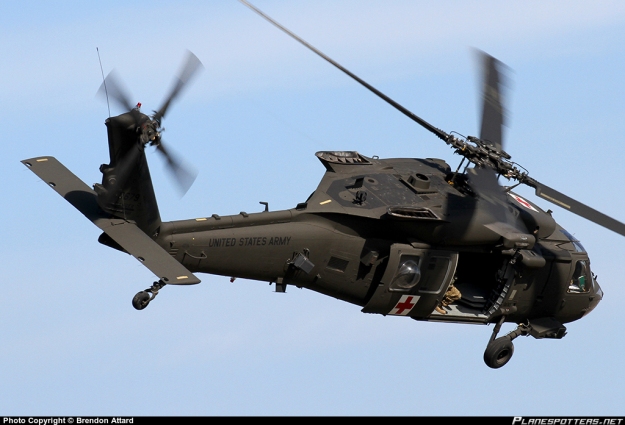Grasping the Skies: UH 60 Helicopter Upkeep Checklist
Grasping the Skies: UH 60 Helicopter Upkeep Checklist
Blog Article
Browsing Uh 60 Helicopter Regulations and Compliance Demands

Regulatory Framework Introduction
The regulative framework governing UH-60 helicopter procedures incorporates a complicated set of guidelines and criteria developed by aviation authorities. These policies are made to make sure the safe and effective procedure of UH-60 helicopters in different atmospheres. The Federal Aviation Management (FAA) plays a central role in developing and imposing these guidelines, which cover a vast array of functional elements, consisting of airworthiness requirements, pilot qualifications, upkeep demands, and functional procedures.
Compliance with these policies is crucial for helicopter drivers to maintain the highest degree of safety and security and functional integrity. Failing to follow these regulations can cause major effects, including crashes, injuries, and regulative assents. Helicopter drivers have to stay notified concerning the newest regulative growths and guarantee that their procedures are in complete conformity with all appropriate policies and requirements.
Airworthiness Instructions and Evaluations
Among the regulatory framework governing UH-60 helicopter operations, a crucial focus lies on compliance with Airworthiness Directives and carrying out extensive assessments to maintain safety and security criteria and functional dependability. Airworthiness Regulations (ADs) are released by aeronautics authorities to resolve unsafe problems in airplane, consisting of the UH-60 helicopter, and mandate particular actions to be taken by drivers or proprietors. Conformity with Advertisements is compulsory, and failure to stick to these directives can cause significant repercussions, including grounding of the aircraft.
Normal examinations are vital to making sure the airworthiness of UH-60 helicopters. These evaluations encompass an array of checks, from regular daily inspections performed by pilots before and after flights to a lot more detailed scheduled maintenance evaluations carried out by licensed auto mechanics. Additionally, unique evaluations might be needed based on certain conditions or occurrences. By sticking to a stringent inspection program, operators can identify and attend to potential issues immediately, thereby enhancing the safety and integrity of UH-60 helicopter operations.
Pilot Credentials and Training

Pilot training for UH-60 helicopters is extensive and covers a wide variety of subjects, including airplane systems, emergency procedures, navigating, and mission-specific training. Furthermore, pilots undertake simulator training to practice numerous emergency circumstances in a controlled atmosphere. This training helps pilots establish the necessary skills to take care of tough circumstances properly.


Furthermore, top article ongoing training and specialist growth are crucial for UH-60 pilots to remain present with the most recent policies, technology, and finest methods. By investing in pilot qualifications and training, drivers can improve safety, optimize efficiency, and guarantee compliance with governing demands in the operation of UH-60 helicopters.
Functional Limitations and Requirements
Pilot credentials and training function as the foundation for recognizing the functional limitations and needs connected with UH-60 helicopter operations (uh 60). These functional restrictions are established to guarantee the security of the crew, guests, and the aircraft itself. Functional restrictions may consist of factors such as climate condition, weight constraints, elevation constraints, and functional limits. It is essential for pilots to be fluent in these restrictions to make enlightened decisions throughout flight procedures. Additionally, conformity needs, such as adhering to details flight paths, interaction protocols, and emergency situation treatments, are vital for keeping operational safety and security and regulatory compliance. Pilots have to stay present with all operational limitations and demands through routine training, instructions, and reviews to alleviate threats and guarantee efficient and risk-free UH-60 helicopter procedures. By focusing on adherence to these functional guidelines, pilots can improve the total safety and security and performance of their goals while maintaining governing standards.
Emergency Situation Procedures and Compliance Screening
Reliable emergency situation treatments and detailed conformity screening are important elements of preserving operational safety and regulatory adherence in UH-60 helicopter procedures. Emergency situation procedures encompass methods for numerous situations, including engine failures, fires, hydraulic concerns, and a my sources lot more. Pilots and crew participants have to be skilled in these procedures to respond quickly and efficiently in emergencies. Normal conformity testing makes certain that the helicopter fulfills all regulative requirements established forth by aviation authorities. This screening includes comprehensive evaluations, checks, and evaluations to verify that the aircraft is airworthy and in conformity with all appropriate regulations.
Furthermore, conformity screening might involve simulations of emergency scenarios to examine the staff's reaction and the helicopter's efficiency under tension. By focusing on emergency situation treatments and conformity screening, UH-60 drivers can minimize risks and show their commitment to safety and regulative compliance.
Final Thought
Finally, adherence to regulative structure, compliance with airworthiness directives, pilot qualifications and training, operational constraints, and emergency situation treatments are crucial for browsing the policies and needs of running a UH-60 helicopter. uh 60. It is essential for operators to prioritize safety and ensure complete conformity with all relevant guidelines to maintain the airworthiness and functional honesty of the airplane
Browsing the regulative landscape surrounding UH-60 helicopter procedures requires a nuanced understanding of the complex web of guidelines and conformity needs.Conformity with these policies is important for helicopter operators to maintain the highest possible levels of safety and functional honesty.In the middle of the regulatory structure regulating UH-60 helicopter operations, a crucial emphasis exists on compliance with Airworthiness Directives and performing complete examinations to maintain safety criteria and operational reliability.Efficient emergency situation procedures and comprehensive conformity testing are critical elements of maintaining functional safety and governing adherence in UH-60 helicopter operations. Normal compliance screening ensures that the helicopter fulfills all regulatory needs set forth by air travel authorities.
Report this page